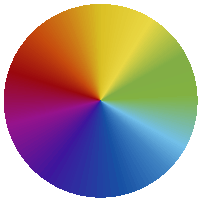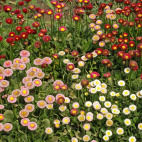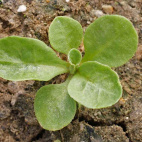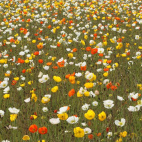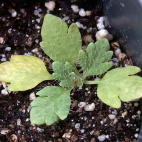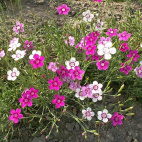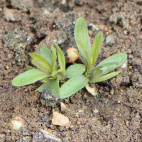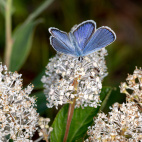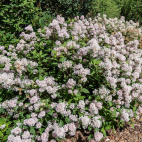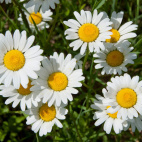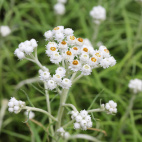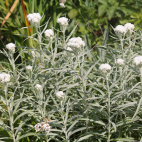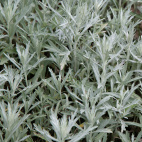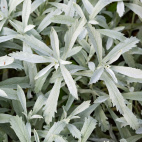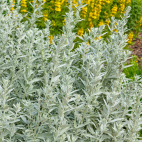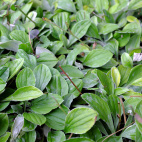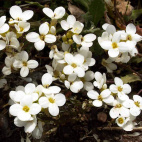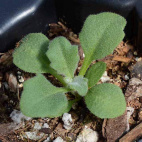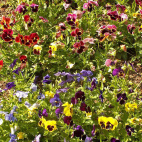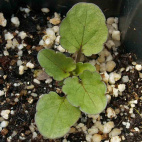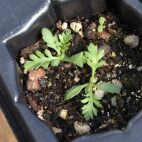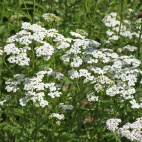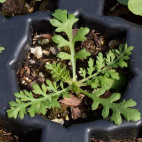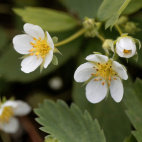Color
Availability
USDA Zone
Region
Type
Duration
Season
Germination
Soil
Sunlight
Height
Use
Narrow Your Search
Color
Availability
USDA Zone
Region
Type
Duration
Season
Germination
Soil
Sunlight
Height
Use
Wildflower Seeds - California Region
The wildflower species listed in the California Region are those that would grow well in the Central Valley as well as the coastal areas of Southern California. If you are in the mountains you might want to check out the Mountain Region, or if you are in the desert areas in the south, you'll want to look at the Dry West Region. The species of bulk wildflowers listed on this page are those that are either native here, or are annuals that grow well in this zone. There are hundreds of bulk California wildflower seeds to choose from, so please use the filters along the left side of the screen to narrow your search to match your soils, lighting, and any other attributes that you may want. If you are looking for something that is strictly native to your immediate area, you can check out the distribution map that is found on the detail pages of most of the species.
-
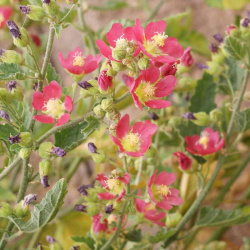 Desert Globemallow Seeds
Sphaeralcea ambigua
Native to the American southwest and Mexico, this shrub bears beautiful blossoms that vary in color from pink to orange. This tough little perennial grows well in poor soil and can handle the intense heat and drought of the desert southwest, making it an ideal plant for xeriscaping.Quick Viewx
Desert Globemallow Seeds
Sphaeralcea ambigua
Native to the American southwest and Mexico, this shrub bears beautiful blossoms that vary in color from pink to orange. This tough little perennial grows well in poor soil and can handle the intense heat and drought of the desert southwest, making it an ideal plant for xeriscaping.Quick ViewxDesert Globemallow Seeds
Sphaeralcea ambigua
Native to the American southwest and Mexico, this shrub bears beautiful blossoms that vary in color from pink to orange. This tough little perennial grows well in poor soil and can handle the intense heat and drought of the desert southwest, making it an ideal plant for xeriscaping.
$3.48 Pkt - $20.16 / Oz -
 English Daisy Seed Mix
Bellis perennis
This classic continues to delight daisy lovers everywhere. The mix provides a dazzling array of colors and makes an excellent ground cover plant.Quick View$3.48 Pkt - $20.16 / Oz
English Daisy Seed Mix
Bellis perennis
This classic continues to delight daisy lovers everywhere. The mix provides a dazzling array of colors and makes an excellent ground cover plant.Quick View$3.48 Pkt - $20.16 / Oz -
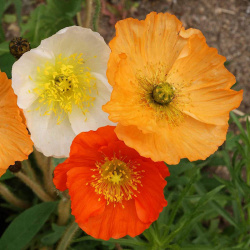 On Sale!
Iceland Poppy Seeds
Papaver nudicaule
This hardy poppy comes from the arctic regions of Canada and Europe, so makes an excellent choice for areas with harsh winters. The large blossoms often self-sow and are highly attractive to bees and butterflies.Quick View$3.48 Pkt - $13.34 / Oz
On Sale!
Iceland Poppy Seeds
Papaver nudicaule
This hardy poppy comes from the arctic regions of Canada and Europe, so makes an excellent choice for areas with harsh winters. The large blossoms often self-sow and are highly attractive to bees and butterflies.Quick View$3.48 Pkt - $13.34 / Oz -
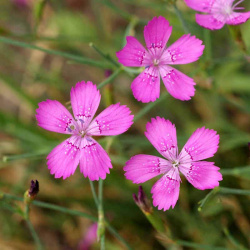 On Sale!
Maiden Pinks Seeds
Dianthus deltoides
Pretty as pink, these little beauties are a pleasure to cultivate. This easy-to-grow perennial makes a wonderful kind for a child or beginning gardener to try.Quick View$3.48 Pkt - $14.49 / Oz
On Sale!
Maiden Pinks Seeds
Dianthus deltoides
Pretty as pink, these little beauties are a pleasure to cultivate. This easy-to-grow perennial makes a wonderful kind for a child or beginning gardener to try.Quick View$3.48 Pkt - $14.49 / Oz -
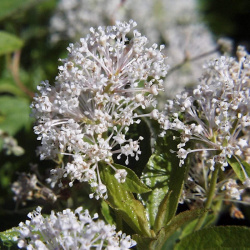 New Jersey Tea Seeds
Ceanothus americanus
Once used by American colonists as a tea substitute, this low-growing shrub bears fragrant white flower clusters. It also makes a lovely border or addition to prairie plantings.Quick View$3.75 Pkt - $80.00 / Oz
New Jersey Tea Seeds
Ceanothus americanus
Once used by American colonists as a tea substitute, this low-growing shrub bears fragrant white flower clusters. It also makes a lovely border or addition to prairie plantings.Quick View$3.75 Pkt - $80.00 / Oz -
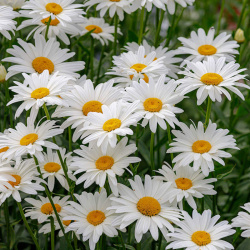 Ox Eye Daisy Seeds
Chrysanthemum leucanthemum
The famous "He Loves Me, He Loves Me Not" Daisy brings sunshine wherever it blooms. Originating in Europe, the hardy flower spread rapidly to other continents and can become invasive. Cannot ship to CO, OH, MT, ND, WA, or WY States.Quick View$2.98 Pkt - $7.52 / Oz
Ox Eye Daisy Seeds
Chrysanthemum leucanthemum
The famous "He Loves Me, He Loves Me Not" Daisy brings sunshine wherever it blooms. Originating in Europe, the hardy flower spread rapidly to other continents and can become invasive. Cannot ship to CO, OH, MT, ND, WA, or WY States.Quick View$2.98 Pkt - $7.52 / Oz -
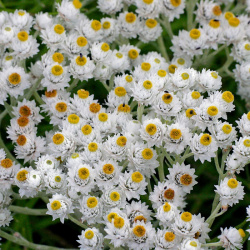 Out Of Stock
Pearly Everlasting Seeds
Anaphalis margaritacea
Often used in traditional dried flower arrangements, pearly everlasting keeps its texture and whiteness for years after it is cut. The attractive plant is also a favorite for butterflies.Quick View$3.96 Pkt - $400.00 / Oz
Out Of Stock
Pearly Everlasting Seeds
Anaphalis margaritacea
Often used in traditional dried flower arrangements, pearly everlasting keeps its texture and whiteness for years after it is cut. The attractive plant is also a favorite for butterflies.Quick View$3.96 Pkt - $400.00 / Oz -
 Prairie Sage Seeds
Artemisia ludoviciana
This attractive plant will fill the air with a spicy scent. The silvery foliage stands out in beautiful contrast in native plantings, as well as being a carefree, bushy ground cover.Quick View$3.75 Pkt - $28.00 / Oz
Prairie Sage Seeds
Artemisia ludoviciana
This attractive plant will fill the air with a spicy scent. The silvery foliage stands out in beautiful contrast in native plantings, as well as being a carefree, bushy ground cover.Quick View$3.75 Pkt - $28.00 / Oz -
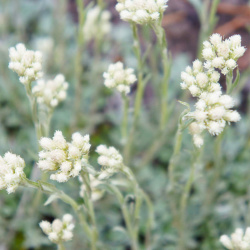 Pussytoes Seeds
Antennaria plantaginifolia
Children will love these fun, fuzzy flowers because they look and feel like tiny kitten paws. The dense, attractive foliage is drought resistant and makes an excellent ground cover for rocky, dry locations.Quick View$3.96 Pkt - $280.00 / Oz
Pussytoes Seeds
Antennaria plantaginifolia
Children will love these fun, fuzzy flowers because they look and feel like tiny kitten paws. The dense, attractive foliage is drought resistant and makes an excellent ground cover for rocky, dry locations.Quick View$3.96 Pkt - $280.00 / Oz -
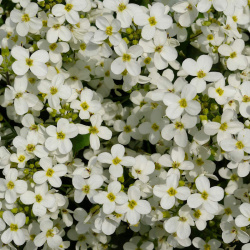 On Sale!
Rockcress Seeds
Arabis alpina
This attractive foliage forms a dense mat close to the ground, while the stems support clusters of pure white, tiny flowers. The native groundcover also grows well in rock gardens.Quick View$3.48 Pkt - $16.57 / Oz
On Sale!
Rockcress Seeds
Arabis alpina
This attractive foliage forms a dense mat close to the ground, while the stems support clusters of pure white, tiny flowers. The native groundcover also grows well in rock gardens.Quick View$3.48 Pkt - $16.57 / Oz -
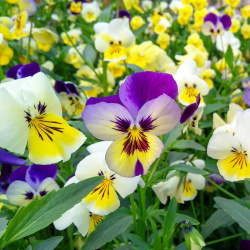 Swiss Giants Pansy Seed Mix
Viola wittrockiana
Worthy of a Swiss window box, these impressive blooms come in a brilliant array of color. This compact plant is technically a perennial but is often grown as an annual. The flowers are edible and can be used as garnishes, or in salads.Quick View$3.48 Pkt - $30.00 / Oz
Swiss Giants Pansy Seed Mix
Viola wittrockiana
Worthy of a Swiss window box, these impressive blooms come in a brilliant array of color. This compact plant is technically a perennial but is often grown as an annual. The flowers are edible and can be used as garnishes, or in salads.Quick View$3.48 Pkt - $30.00 / Oz -
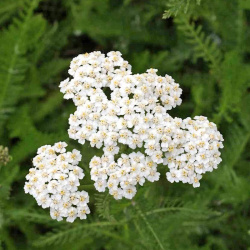 Western Yarrow Seeds
Achillea millefolium occidentalis
Growing clusters of small white flowers and feathery foliage, this is one of the most common wildflowers in the western United States. Yarrow makes an excellent pollen source in arid conditions.Quick View$2.98 Pkt - $9.54 / Oz
Western Yarrow Seeds
Achillea millefolium occidentalis
Growing clusters of small white flowers and feathery foliage, this is one of the most common wildflowers in the western United States. Yarrow makes an excellent pollen source in arid conditions.Quick View$2.98 Pkt - $9.54 / Oz -
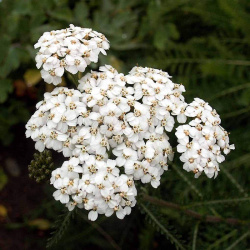 On Sale!
White Yarrow Seeds
Achillea millefolium
This wildflower is a common sight across the US and is often found growing in dry soils. The foliage is aromatic, and the long-lasting flowers work well for dried arrangements. Yarrow is also a valuable species for its herbal properties.Quick View$2.98 Pkt - $8.20 / Oz
On Sale!
White Yarrow Seeds
Achillea millefolium
This wildflower is a common sight across the US and is often found growing in dry soils. The foliage is aromatic, and the long-lasting flowers work well for dried arrangements. Yarrow is also a valuable species for its herbal properties.Quick View$2.98 Pkt - $8.20 / Oz -
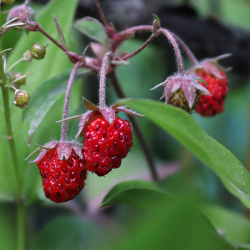 Wild Strawberry Seeds
Fragaria virginiana
Native to the United States, this plant bears tiny, wild strawberries. They are flavorful and sweet, albeit seedier than their cultivated cousins. Great for the homestead garden!Quick View$3.96 Pkt - $400.00 / Oz
Wild Strawberry Seeds
Fragaria virginiana
Native to the United States, this plant bears tiny, wild strawberries. They are flavorful and sweet, albeit seedier than their cultivated cousins. Great for the homestead garden!Quick View$3.96 Pkt - $400.00 / Oz
The wildflower species listed in the California Region are those that would grow well in the Central Valley as well as the coastal areas of Southern California. If you are in the mountains you might want to check out the Mountain Region, or if you are in the desert areas in the south, you'll want to look at the Dry West Region. The species of bulk wildflowers listed on this page are those that are either native here, or are annuals that grow well in this zone. There are hundreds of bulk California wildflower seeds to choose from, so please use the filters along the left side of the screen to narrow your search to match your soils, lighting, and any other attributes that you may want. If you are looking for something that is strictly native to your immediate area, you can check out the distribution map that is found on the detail pages of most of the species.



